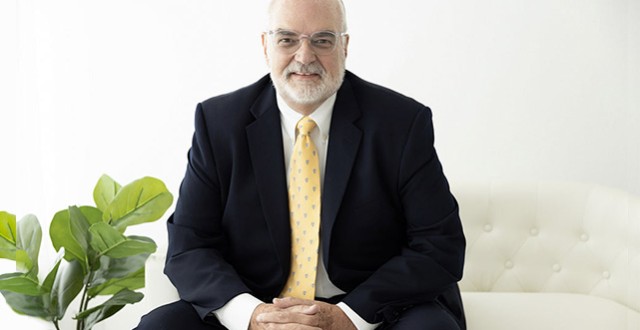
- Mediation
- Arbitration
- Court Neutrals
- Online Dispute Resolution
- Technology
- Court Decisions
- More
- Legislation
- Healthcare
- Guest Posts
- John DeGroote
- John C. Fleming
- Rick Freeman
- Professor Peter Friedman
- Honorable W. Royal Furgeson, Jr.
- James M. Gaitis
- Laura A. Kaster
- Professor John Lande
- Philip J. Loree, Jr.
- Michael McIlwrath
- F. Peter Phillips
- Professor Alan Scott Rau
- Professor Thomas J. Stipanowich
- Professor S.I. Strong
- Richard Webb
- Glen M. Wilkerson
- International arbitration
- Regulation
- Sports and Entertainment
- We’re Back!!!!Well, it’s been a while since we published and that is about to change. Since I spent much of last year becoming
 JAMS Welcomes Karl Bayer to its Panel of NeutralsJAMS, the world’s largest private alternative dispute resolution (ADR) provider, is pleased to announce that Karl Bayer
JAMS Welcomes Karl Bayer to its Panel of NeutralsJAMS, the world’s largest private alternative dispute resolution (ADR) provider, is pleased to announce that Karl Bayer Class Action Waivers in Arbitration Agreements: The Twenty-First Century Arbitration Battleground and Implications for the EU CountriesLinda S. Mullenix, Morris & Rita Atlas Chair in Advocacy at the University of Texas School of Law, has written “Class Ac
Class Action Waivers in Arbitration Agreements: The Twenty-First Century Arbitration Battleground and Implications for the EU CountriesLinda S. Mullenix, Morris & Rita Atlas Chair in Advocacy at the University of Texas School of Law, has written “Class Ac Picking the Proper Technological Tool for Problem-Solving in ArbitrationProfessor Amy J. Schmitz, John Deaver Drinko-Baker & Hostetler Chair in Law and Co-Director of the Translational Data An
Picking the Proper Technological Tool for Problem-Solving in ArbitrationProfessor Amy J. Schmitz, John Deaver Drinko-Baker & Hostetler Chair in Law and Co-Director of the Translational Data An
Recent Posts
LinkedIn Post | International Commercial Mediation: only lip service?
Karl came across this interesting comment by Jose Antonio Garcia Alvaro, posted at the ADR Resources Dispute Resolution and Mediation LinkedIn Group. I just received and read the 2009 statistical report of the Arbitration Institute of the Stockholm Chamber of Commerce, an institution that ranks among the best in the world according to several surveys. http://www.sccinstitute.se/filearchive/3/31104/SCC_Statistical_Report_2009.pdf As you will see, of 225 cases filed last year with the SCC, only 3 were resolved through mediation. That’s negligible. At ADR Resources, we follow worldwide trends on arbitration and mediation. Over the past five years numerous reports have indicated that the international business community was ready to shift from an “arbitration-only” scenario, to a growing use of mediation, a growing use of a multi-tier approach to resolve commercial disputes. It all appears to be a case of intentions, not deeds –lip service, if you will. When it comes to drafting international commercial contracts, arbitration reigns supreme as the preferred ADR method by far thus far. There is no “growing” use of mediation to levels that would suggest even a slight shift to mediation to resolve international business disputes. Now, why? Not enough experienced mediators out there in this whole, big world? An entrenched sense that binding arbitration is best when it comes to resolving international commercial disputes? Not enough work on the part of ADR organizations to promote the use of mediation in “big-time” international commercial transactions? A bit of “all of the above”? We would like to know your comments about this post!
Continue reading...Applying Conflict Resolution Skills in Health Care PART II: Separate the People from the Problem
By Holly Hayes Last week, we started our health care conflict resolution series with applying the principled negotiation method to health care (post available here). Principled negotiation involves: Separating the people from the problem. Focusing on interests, not positions. Generating a variety of possibilities before deciding what to do. Insisting that the result be based on some objective standard. This post will focus on “separating the people from the problem”. Here is an example of a healthcare conflict where the parties misunderstood each other, got angry and upset and started taking things personally: Radiology Director: Technician X, I have a patient complaint here that says it took over an hour for a basic scan to be performed last week. What were you doing that caused such a delay? Technician X: Which day, which patient? What were the details? Radiology Director: That doesn’t matter, what matters is that now we have a complaint against our department. Our reputation as a department and as a patient-friendly hospital is on the line. I’m going to have to put this complaint in your file. Now, what happened? Technician X: I guess it doesn’t matter, what matters is the complaint. I’ll try to see that it doesn’t happen again. Radiology Director: You do that. Another complaint like this and we’ll have to come up with a disciplinary action plan. What happened? The problem, “we cannot have complaints like this” became a personal attack on Technician X. If we can separate the people from the problem, we can maintain a good working relationship and successfully address the problem. In Getting to YES, Roger Fisher and William Ury outline three categories to think about in terms of dealing with people: perceptions, emotions and communication. Perceptions: In our example, the parties did not “put themselves in the other person’s shoes”. Had the Radiology Director listened to and responded to Technician X when he asked for the details, she might have gained a better understanding of the technician’s perception of the problem and why it happened. Understanding Technician X’s point of view would have allowed the Director to proceed with new information to solve the actual problem of a delay of service. Emotions: The Director did not recognize or explain her own emotions and why she was worried about the complaint. She also did not have any idea about how the technician felt about the complaint. When parties are freed from the burden of unexpressed emotions they can more likely work on the problem. Communication: In our scenario, the Director did not listen actively and acknowledge the technician as a human being with potentially useful information to address the problem. Let’s change the situation to separate the people from the problem using the techniques described above: Radiology Director: Technician X, I have a patient complaint here that says it took over an hour for a basic scan to be performed last week. Can you tell me more about what happened with Patient Y on Date Z? Technician X: I remember that patient and that incident. That was the day our CT scanner broke and we didn’t have a spare part, so we had to schedule all of the patients on one machine. We tried to explain the problem to all of the patients, but the waiting time was much longer than the departmental goals we have set for ourselves. I felt really bad about Patient Y because she was next in line when the scanner broke and her wait was the longest. Radiology Director: It is upsetting to me when we have a complaint because I have to respond to the CEO about what happened. You have given me some good information though. Do we need to work with our Physical Plant Maintenance Department and come up with a better system to keep spare parts on hand? Technician X: I was really upset about the delay, too. I would be happy to schedule a meeting with the Plant Department and come up with a better system. Technician A has experience in this area from another facility, could she work with me and we can bring you some recommendations to consider in the next two weeks? Radiology Director: Yes, please work with Technician A and the Physical Plant Department. Maybe we can turn this negative complaint into a positive by making sure it doesn’t happen again. I feel so much better now about communicating our plan of action to the CEO. When the Radiology Director dealt with Technician X as a human being and dealt with the problem on its own merits, she was able to maintain a good working relationship while successfully addressing the problem. Look for the next post in our series where we will discuss focusing on interests, not positions in the health care setting. We welcome any comments on this post and any suggestions for upcoming posts in this series. Technorati Tags: Healthcare, ADR Holly Hayes is a mediator at Karl Bayer, Dispute Resolution Expert where she focuses on mediation of health care disputes. Holly holds a B.A. from Southern Methodist University and a Masters in Health Administration from Duke University. She can be reached at: holly@karlbayer.com.
Continue reading...ABA Section of Intellectual Property | Complex Patent Suits: The Use of Special Masters for Claim Construction
The following is an excerpt from “Complex Patent Suits: The Use of Special Masters for Claim Construction” by Neil A. Smith published at Landslide by the ABA Section of Intellectual Property Law. When a complex patent infringement case arises, it can be in the client’s or the court’s best interest to bring in an expert on patent law and technology—as a special master—to assist the judge. Special masters can provide value to all parties in complex patent litigation by contributing in the area of most complexity and importance: claim construction. Even though claim construction is reviewed de novo on appeal by the Federal Circuit, a recent study commissioned by the Federal Judicial Center has shown that claim constructions in complex patent cases stand up better on appeal when a special master was involved in the process. The use of a special master in patent litigation is now an established practice. Since the founding of our government, U.S. courts have had an inherent authority to appoint special masters. Federal courts, where patent cases are exclusively held, enjoy statutory authority, under Federal Rule of Civil Procedure 53, to appoint a special master—though the question of whether recent changes to Rule 53 supersede a court’s inherent authority to appoint a special master is debated. Rule 53 empowers a judge to appoint a special master (1) upon consent of the parties; (2) to hold a trial proceeding and make or recommend factual findings on issues to be decided without a jury under “some exceptional conditions”; or (3) to address pretrial and post-trial matters that an available judge or magistrate judge could not effectively and timely address. However, courts prefer to assign a special master only when the parties agree, particularly because the parties may bear and share the special master’s cost. Who are the special masters, and what experience and education do they have? Some persons serve as special masters occasionally and others serve more regularly. The recent study commissioned by the Federal Judicial Center suggested that nearly all individuals serving as special masters were attorneys possessing strong technical and legal training who often had previously served as law clerks to judges on the Federal Circuit. Special masters also possess substantial professional experience, having, on average, spent about years after law school in a variety of highly enriching legal contexts relating to patent and technology, and many have advanced degrees in law.30 Special masters, as a result, can add great value to a complex patent infringement case. The magazine is available to Section members here.
Continue reading...GUEST-POST | When Not To Negotiate: My Tree, My Neighbor’s House
By John DeGroote How do you negotiate with your neighbor as your tree sits on his roof? The subject line only read “Tree Down,” but I began to wonder. The irony wasn’t lost on me as I scanned the rest of the message. A storm, our tree, our neighbor’s house, and a scramble to respond — all as I sat in a seminar on advanced dispute resolution techniques two time zones away. I was soon reminded of a valuable lesson in negotiation that most people never get: Do you even negotiate at all? What’s Your First Move? I have cited all manner of negotiation textbooks on this site, from Getting to Yes to Start with No and beyond — but if your answer to the question “What’s your first move?” was anything other than “Get the tree off his house,” take a deep breath. The roof is supporting the tree at the moment; let’s remove it before the problem is more serious than a few shingles. As the tree guys began their work, I did the math to determine if the damage would exceed the deductible on my homeowner’s insurance — it was my tree so it was my responsibility, right? I thought I’d check, just in case . . .. Responsibility for Tree Damage: The Law My wife did a quick Internet search as we worked to sort this out, and learned that our tree wasn’t the first to fall on someone else’s property. According to one site and more than a few others: The mere fact that it was [someone’s] tree is not enough to create liability for damages on the tree owner. Trees can fall through no fault of the owner’s, such as in a hurricane. In order to be able to hold the neighbor liable for damages, the homeowner must show that the treeowner’s actions somehow contributed to it falling. (This isn’t a site about trees, but for those of you who need more on this, additional links can be found here, here and here.) Responsibility to Your Neighbor: The Rule Isn’t New As I read the links above I realized I didn’t need to look any further for an answer. I asked myself what I’d do if my neighbor’s tree fell on my house — applying a rule I learned at Camp Laney when I was about 7. If the roles were reversed I would expect my neighbor to get his tree off my house, and nothing less. The call was quick and friendly. I’d pay for the tree removal from his house, he’d pay for the minor damage to his roof and — although we didn’t say it — we knew our neighbors would remain our friends. Sometimes You Don’t Negotiate at All I’m confident that someone will tell me I wasted my money paying when I didn’t have to, and others will tell me I should have done something creative like split the difference. Perhaps those are the same folks who told Garrison Keillor that a lawsuit against his next door neighbor would be a good idea (before he moved) or maybe they’re the folks who bill their neighbors for apples that fall across the property line like this guy did. No doubt the decision not to negotiate is often a difficult one. Sometimes it takes a bit of courage, and sometimes it costs a little money. But it’s usually worth it. This post first appeared at Settlement Perspectives. John DeGroote currently serves as the Liquidating Trustee to the BearingPoint, Inc. Liquidating Trust. He writes the blog Settlement Perspectives where he discusses new perspectives on settlement, negotiation, and related topics based on his experiences. John is a former President, Chief Legal Officer and Secretary at BearingPoint, Inc., formerly known as KPMG Consulting, Inc. Prior to that, he served as the company’s Executive Vice President and Chief Legal Officer. John has also practiced law at McKool Smith, P.C. and Jackson Walker, L.L.P., where he managed complex technology, commercial, and intellectual property litigation matters. He holds a J.D. from Duke University School of Law and a B.A. from Mississippi State University.
Continue reading...Arbitration
Mediation
Healthcare Disputes
Legal Research
About Disputing
Disputing is published by Karl Bayer, a dispute resolution expert based in Austin, Texas. Articles published on Disputing aim to provide original insight and commentary around issues related to arbitration, mediation and the alternative dispute resolution industry.
To learn more about Karl and his team, or to schedule a mediation or arbitration with Karl’s live scheduling calendar, visit www.karlbayer.com.






